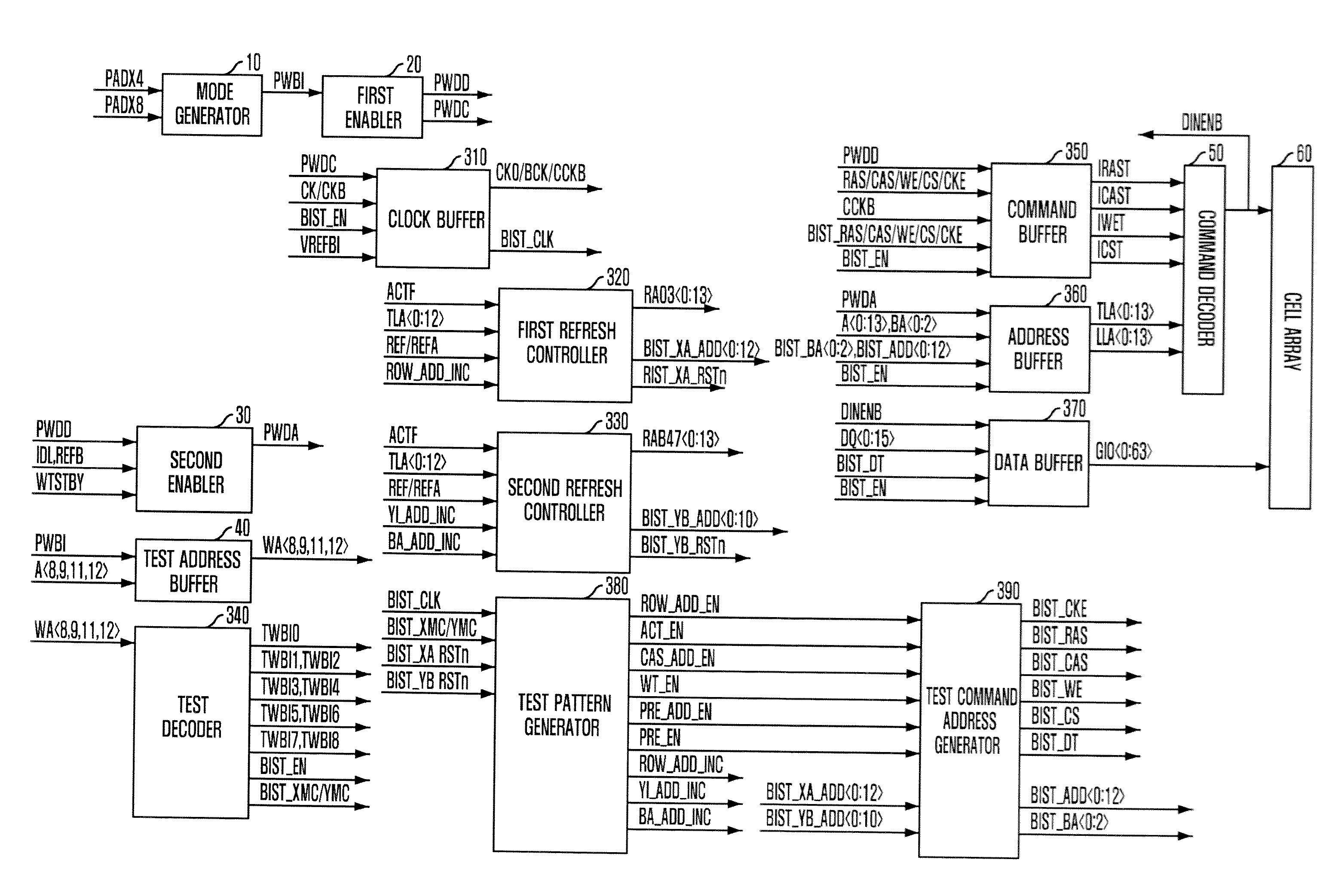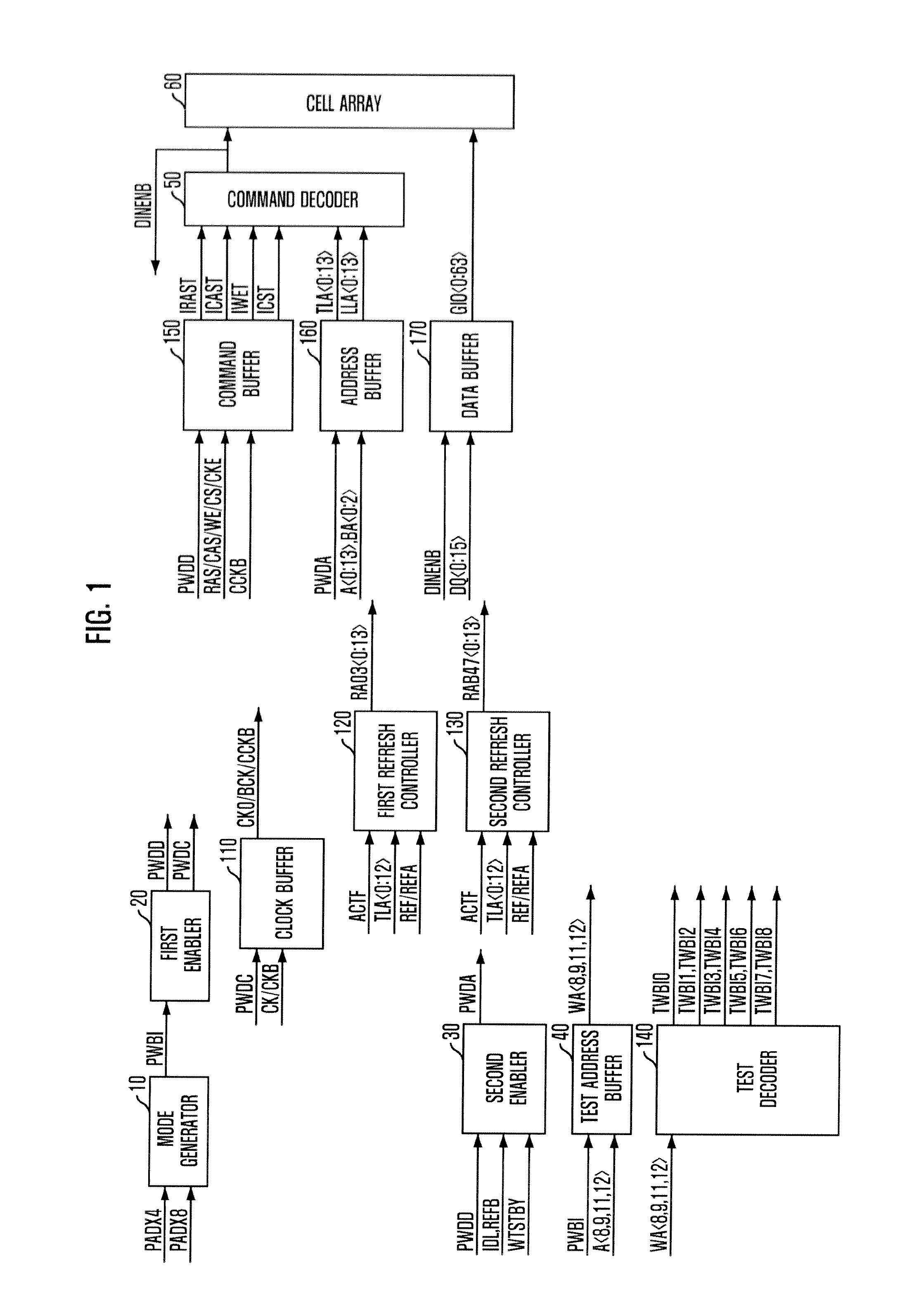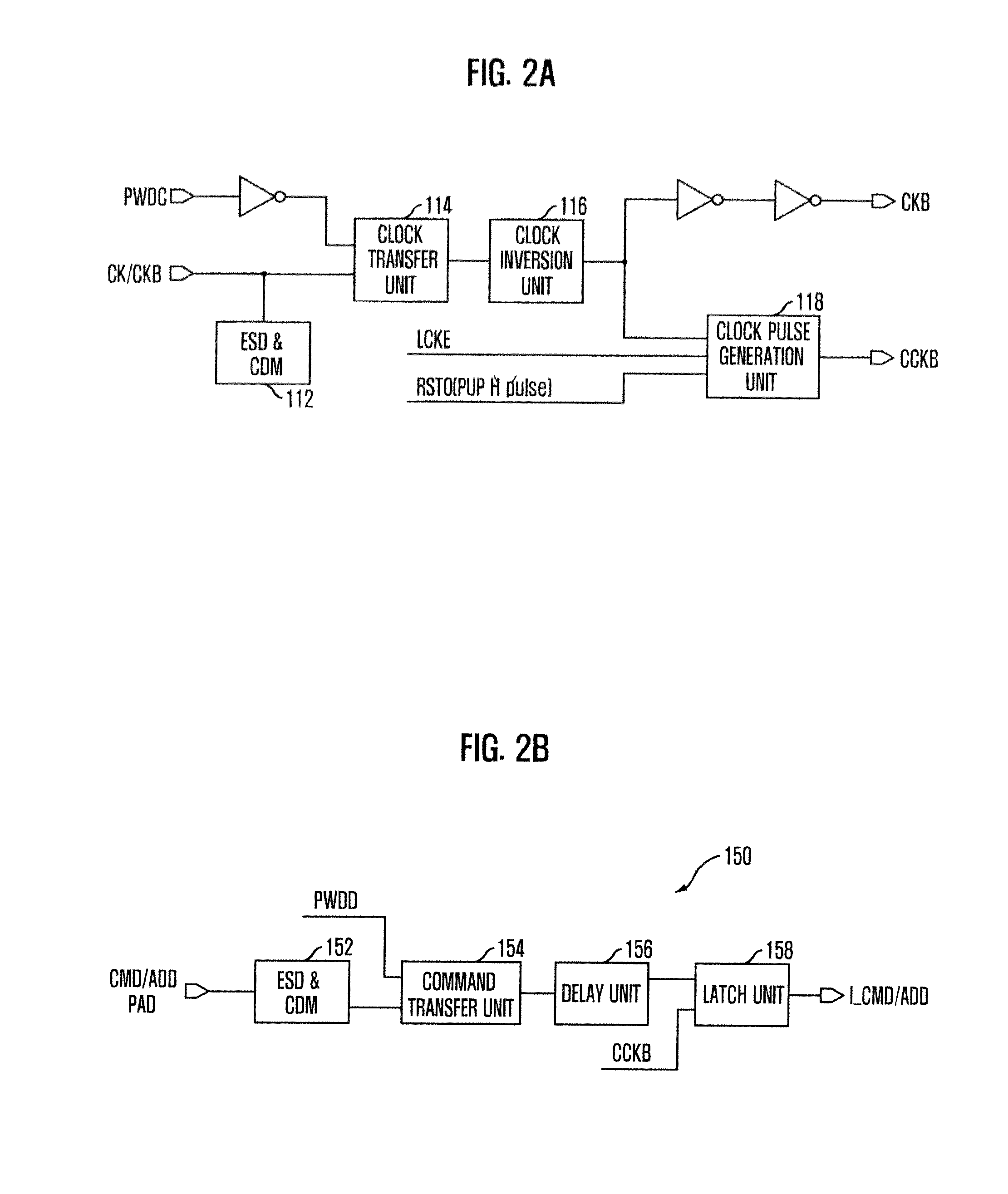Semiconductor memory device
a memory device and semiconductor technology, applied in the direction of instruments, coding, code conversion, etc., can solve the problems of increasing the number of operations to be tested, complex testing process of fabricated semiconductor memory devices, and complex design and fabrication of semiconductor memory devices, so as to reduce or eliminate the test time for operation.
- Summary
- Abstract
- Description
- Claims
- Application Information
AI Technical Summary
Benefits of technology
Problems solved by technology
Method used
Image
Examples
Embodiment Construction
[0034]Hereinafter, a semiconductor memory device in accordance with the present invention will be described in detail with reference to the accompanying drawings.
[0035]A wafer burn-in (WBI) mode is a test mode of detecting defects by applying a DC voltage to a word line or a bit line in a relatively short time (maximally, a few of seconds). In accordance with the present invention, however, even in a WBI mode performed at a wafer-level, it is possible to perform a built-in self-stress (BISS) test allowing a semiconductor memory device to be operated similarly to a test pattern carried out in a test during burn-in (TDBI) process. Unlike the case where a variety of test patterns and algorithms are implemented through a plurality of pads, a WBI mode test for detecting defects is performed using only a small number of pads generally. However, in the present invention, the BISS test for various tests is performed by implementing an algorithm and a test pattern performed in the TDBI proce...
PUM
 Login to View More
Login to View More Abstract
Description
Claims
Application Information
 Login to View More
Login to View More - R&D Engineer
- R&D Manager
- IP Professional
- Industry Leading Data Capabilities
- Powerful AI technology
- Patent DNA Extraction
Browse by: Latest US Patents, China's latest patents, Technical Efficacy Thesaurus, Application Domain, Technology Topic, Popular Technical Reports.
© 2024 PatSnap. All rights reserved.Legal|Privacy policy|Modern Slavery Act Transparency Statement|Sitemap|About US| Contact US: help@patsnap.com










